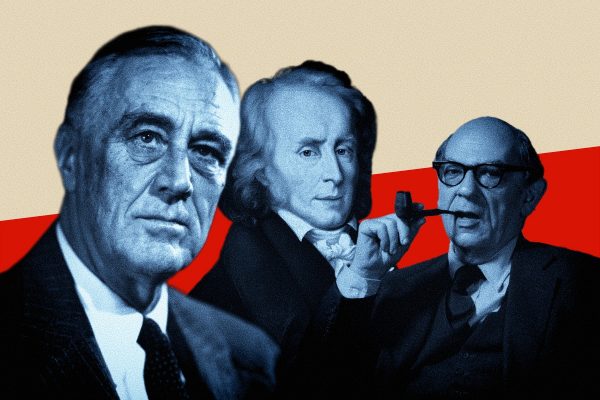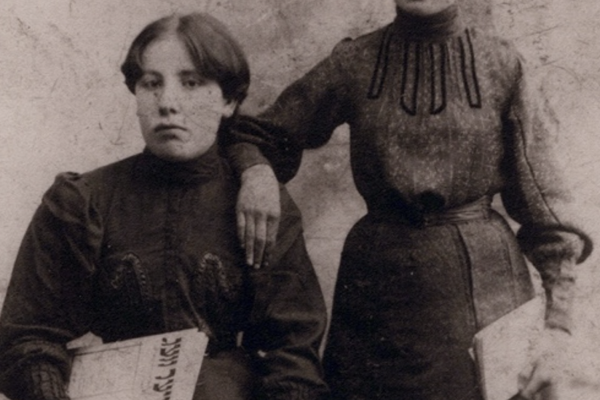With nine months still separating us from the first primaries, the main political activity this month consists of operatives dropping hints to the press about their strategies for the next election. In addition to last week’s spate of presidential announcements, the Washington Post reported that the Democracy Alliance, a “cadre of wealthy liberal donors” co-founded by George Soros, “aims to pour tens of millions of dollars into rebuilding the left’s political might in the states, racing to catch up with a decades-old conservative effort that has reshaped statehouses across the country.”
If this story sounds familiar, it’s because liberals make similar noises after every Democratic debacle—Bush’s “permanent Republican majority,” the “shellacking” of 2010, and now the disastrous 2014 midterms. Former DNC chair Howard Dean’s “fifty-state strategy” was one high-profile attempt to tackle this problem, which has also been a staple of progressive media discourse for a decade or more; other efforts, such as the Secretary of State Project, focused on specific non-federal offices. Both are now defunct, but the weaknesses they sought to address linger on with limited progressive infrastructure dedicated to addressing them. The official Democratic Party organs that focus on down-ballot races still operate at a huge funding disadvantage, and the results of 2014 speak for themselves: the cumulative Democratic loss during the Obama era is now thirty state legislative chambers and eleven governorships. Nor are the proposed solutions new; the conservative organization that the Democracy Alliance is most keen to imitate, the American Legislative Exchange Council (ALEC), is over four decades old. So why weren’t calls for progressives to make a concerted effort in state and local politics heeded the first time, or the second?
One possibility, which the Democracy Alliance appears to be attempting to rectify, is that Democratic funders are to blame. For one thing, there are fewer of them, since the donor class still leans strongly to the right. The Republican edge in campaign finance may matter more in state legislature elections, where winning candidates often spend in the five-digit range, than in federal races that may reach the tens of millions. Republican state-level candidates outraised Democrats $1.38 billion to $1.12 billion in 2014, a 23.2 percent edge, while Republican congressional candidates enjoyed a 22.5 percent fundraising edge ($902 million to $736 million). These numbers don’t include contributions to advocacy groups like the ones that the Democracy Alliance supports, but come from a very similar donor base; the Democracy Alliance’s board, for example, includes a number of major Democratic campaign contributors.
Beyond size, though, the liberal donor class differs from its conservative counterpart in a number of ways. Democratic contributors, for example, are more likely to come from the tech or legal sectors, while Republicans depend more heavily on contributors who made their fortunes in finance, energy, and agriculture. Liberal donors, like liberal voters, also skew younger and hail disproportionately from major cities. It is possible that these characteristics lead progressive and conservative donors to allocate their money differently; perhaps urban, cosmopolitan progressive millionaires feel fewer ties (or have less concentrated economic interests) in their home states. The conservative movement has certainly benefited from institutions, such as the Wisconsin-based Bradley Foundation, that have generously funded think tanks and political outfits in their home states. And liberals don’t have an equivalent to Art Pope, who spent millions bankrolling conservative groups in North Carolina before being named budget director by the newly elected Republican governor in 2012. The most famous progressive funder, George Soros, in contrast, is a transnational philanthropist. (Of course, there are also some conservative donors who care mainly about federal elections, particularly ones like Sheldon Adelson who focus on foreign policy.) Finally, the obstacle to getting major donors to back a progressive equivalent to ALEC might be ideological rather than strategic. Wealthy liberals are not always eager to prioritize strong labor unions and higher taxes on the rich, and so might be more willing to give to specific Democratic candidates with acceptable views than to an advocacy group with an aggressively populist agenda.
A second potential explanation is that the interest groups in the Democratic coalition—the activists, rather than the funders—don’t have the right incentives to focus on down-ballot elections. Perhaps environmentalists, racial justice groups, LGBT organizations, and other liberal interests would like someone to tackle the tricky problem of building power in the states, but each group thinks its own interests are better served by pursuing high-profile national fights. Perhaps Democrats’ reliance on the “netroots” and small donors makes them more likely than Republicans to pick flashy causes that attract clicks and contributions. Or perhaps the progressive coalition is just too fragmented to organize an effort to take back the states. The Democracy Alliance initiative, for example, is already under fire for not including any Latino organizations among its beneficiaries. If you’re a conservative, you could interpret this as the left reaping the folly of identity politics; if you are liberal (or enjoy psychological explanations for political behavior), you might prefer to see this as a consequence of progressives’ natural aversion to hierarchy.
A third hypothesis for liberal weakness in state politics is that conservatives are more likely to care more about intrinsically local issues, such as the content of their kids’ textbooks, while liberals tend to focus on federal social programs. Veteran liberal think-tanker Mark Schmitt endorsed a version of this theory in a 2013 American Prospect piece on the preponderance of conservative state-level policy shops: “I think it’s inherent in liberalism to think of national action being what we’re all about…For conservatives, states’ rights have always been part of their platform.” Of course, this doesn’t explain why the post-2010 conservative state governments weren’t enough to show Democrats how much can be accomplished without holding the national levers of power.
A final explanation is that Democrats simply face too many structural weaknesses in state and local politics, no matter what strategies their funders and activists employ. Groups in the Democratic coalition, such as minorities and young people, are less likely to vote in off-year elections. The habit of clustering in cities also puts them at a disadvantage in legislative elections, since a 95 percent Democratic district is effectively wasting thousands of votes. This problem would exist even if there were no such thing as gerrymandering, but Republicans can make it worse when they draw the legislative maps. There is also the idea, repeated as folk wisdom in progressive circles, that liberals are more likely to move to New York or D.C. at the age when young conservatives are putting down roots in their hometowns, making the connections that let them run for office. Put it all together and Democrats start out in a huge hole before ideology, interest groups, or funders ever come into play.
All of the above are plausible explanations for why progressives still lag in the states, but in my opinion, no single one is totally satisfying. A more complete explanation might have to do with one of the most powerful forces in politics: inertia. Liberal funders, activists, and voters haven’t fixed weaknesses that were evident a decade ago because solving major collective action problems is difficult and political actors have a tendency to continue doing what they’ve always done, especially without a clear alternative model to follow. ALEC has existed for four decades as one such alternative, but its public notoriety really only began in 2012 when activists began targeting it in the wake of Trayvon Martin’s death for backing “Stand Your Ground” laws; before then, it may not have been on the radar of many progressive funders or activists. Where a vacuum exists, some political entrepreneur will usually step in to try to solve the problem, but that doesn’t guarantee that their solution will be effective, sustained, or funded. Maybe the Democracy Alliance’s solution will be the one that sticks, or maybe it will fall by the wayside with the rest; either way, its experience will be a strong argument for studying how political movements and organizations develop and why they choose the strategies they do.








